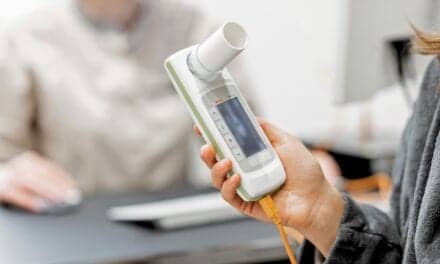Understanding REM-sleep features will assist the polysom-nographer in providing thorough, optimal PAP titration.
Titrating positive airway pressure (PAP) therapy during rapid–eye-movement (REM) sleep can introduce errors due to respiratory changes that are not seen when PAP is titrated during non-REM (NREM) sleep. Physiological occurrences can change parameters and make the polysomnographer consider increasing PAP. The changes that occur during REM seem to be most prominent when phasic eye movements are seen on the electro-oculogram.
The polysomnographer must decide if these changes (cessation of flow and thoracoabdominal efforts) are truly respiratory events requiring an increase in noninvasive ventilatory support. A series of physiological and cerebral changes takes place during the transformation from NREM to REM sleep. Some of these characteristics are a desynchronized cortical electroencephalogram (EEG), skeletal-muscle atonia, a hippocampal theta rhythm, periodic bursts of REM, the presence of pontogeniculo-occipital spikes, changes in respiration, and irregularities in heart rate.1 Understanding these REM-sleep features will assist the polysomnographer in providing thorough, optimal PAP titration (whether continuous or bilevel).
For example, an obstructive sleep apnea (OSA) patient who tested positive on nocturnal polysomnography might return to the sleep laboratory for therapeutic testing. After titrating PAP successfully for two to three consecutive hours (or for the first half of the study) and observing one or two periods of REM sleep, the polysomnographer believes that he or she has found the optimal pressure that eliminates respiratory events, stabilizes oxygen saturation, stops snoring, and prevents arousals. REM sleep intervenes again, but this time, the polysomnographer notices some significant changes. The patient’s breathing pattern exhibits increased frequency and decreased peak amplitude (emulating obstructive hypopneas with what may appear to be a central component). The change in breathing occurs in synchrony with dense phasic eye movements that are sometimes accompanied by phasic jerks and twitches on the electromyogram (EMG). Titration, thus far, has been remarkably successful, but now questions may arise due to the changes that have taken place as a result of these phasic REM events. Is additional titration warranted?
When titrating a patient’s noninvasive ventilation, it is important to understand the nature of breathing during wakefulness, NREM sleep, and REM sleep; each state creates characteristic changes in respiration. During wakefulness, an involuntary excitation of motor-control activity causes breathing to maintain a steady rate. There is conscious control of motor function, but also involuntary neural stimulation from the brain. Once sleep begins, a shift occurs at sleep onset and during NREM sleep. This shift involves a mild reduction in respiratory frequency with a decrease in minute ventilation and tidal volume.2 Quantitative studies also have shown that the deeper the stage of NREM sleep, the lower the minute ventilation will vary from stage 1 to stage 4. Other characteristics of NREM sleep are a mild increase in Paco2 and mild hypoxia.
During REM sleep, there are major alterations in respiratory muscle function. The intercostal muscles that control the contraction of the diaphragm are not totally inhibited, but their activity is significantly reduced, resulting in the attenuation of thoracic and abdominal respiratory efforts. Breathing in phasic REM also differs from breathing during tonic REM. A total inhibition of EMG activity is present during tonic REM, while EMG myoclonia is present during phasic-REM eye blinks. Phasic and tonic REM both appear during (and have their own influences on) titration. Respirations during tonic REM will usually appear less reduced than those seen during phasic REM. It is almost as if there is a phasic system that overrides or precedes the skeletal-muscle atonia that results in phasic twitches and hypnic jerks when phasic eye blinks are dense.
Titration During Phasic REM
Phasic REM can create a challenge for any polysomnographer during titration, so it is necessary to weigh the possible consequences of increasing or reducing PAP. Knowing whether an event is really respiratory or is induced by phasic movement of the eyes suppressing the ancillary monitoring devices is vital. OSA patients who return to a sleep center for therapeutic intervention (or a split-night diagnostic/therapeutic protocol) can provide these challenges during REM sleep on any given night. Many night polysomnographers will do most of their titrating during the NREM portion of the study; they are likely to be approaching the optimal pressure prior to the first or second cycle of REM. REM sleep then intervenes; in most OSA patients, the first sign is usually cessation of flow and thoracoabdominal efforts, with desaturation in synchrony with phasic eye movements. Weighing the effect of these phasic events on the persistence or fragmentation of sleep can complicate titration. Determining whether an arousal was initiated by phasic–REM-induced breathing or a true obstructive event becomes the key issue. Observing any changes in the EEG associated with increases in the EMG signal as a result of these phasic events is vital. If arousals recur, then the polysomnographer should continue to titrate using increments of 1 to 2 cm H2O or according to laboratory protocols (which vary nationwide). Usually, the objective of titrating PAP is similar, but some laboratories mandate the specific amount of time that must elapse between pressure increases of 1 or 2 cm H2O. Eventually, the obstructive apneas or hypopneas associated with desaturations greater than 4% will be eliminated or significantly reduced, so optimal PAP is determined as titration continues during REM sleep.
Overtitration
Knowing when the optimal pressure during REM sleep has been found is paramount. It can be difficult to decide whether to continue increasing PAP because of continued obstructive events or stop increasing PAP and permit phasic-REM–induced breathing to occur. Sometimes, after the polysomnographer has found the best pressure level, he or she may be tempted to continue increasing the pressure to eliminate all cessations of breathing during REM. Eliminating these cessations will not often be possible, especially during dense periods of REM sleep when phasic eye blinks are prominent. In some cases, central sleep apnea may be seen in normal subjects during phasic REM sleep. (See Figure 1, which illustrates these central sleep apnea-like events.) This will override normal respiratory rhythm during phasic events, and this is when overtitration can occur. Being able to differentiate between obstructive/central events and phasic-REM–induced breathing without desaturations or arousals is vital. Increasing the pressure in an attempt to eliminate all cessations of breathing can induce arousals and oral exhalations and can fragment a REM period. The important factor is to avoid increasing PAP every time breathing is attenuated in REM. A good rule of thumb can be followed by increasing pressure slightly; if no significant changes in breathing, oxygen saturation, or persistence of sleep are recognized, then the pressure should be decreased to the previous level. Finding the perfect pressure may not always be possible, but understanding sleep pathologies, breathing in phasic REM, and when to change pressure will produce consistency in titration. (See Figure 2.)
| ABD=Abdominal effort; C3A2=Central 3A2 (brain); ECG=Electrocardiogram; EMG=Electromyogram (chin); FLW=Airflow; LEMG=Limb (leg) electromyogram; LEOG=Left (eye) electro-oculogram; MicL=Snore microphone; O2A1=Occipital 2A1 (brain); REOG=Right (eye) electro-oculogram; SaO2=Pulse oximetry; THO=Thoracic effort
|
To keep titration acceptable and consistent during phasic REM, technologists should also consider four factors in addition to the physiological parameters of the study. First is the arousal threshold; if PAP is sufficient, arousals will have decreased significantly and will not follow a period of obstructive breathing cessation. Second, following a cessation of flow or efforts in synchrony with phasic eye blink, desaturation will not be excessive (not more than 4%). Third, there will be no arousals seen as alterations in the EEG. The patient will continue and progress in REM sleep, although each cycle might increase in duration. Fourth, if the polysomnographer continues to increase pressure and observes no significant positive changes (but, rather, sees increased microarousals or brief EEG shifts), then returning to the previous pressure is warranted.
Alterations to Consider
Some conditions can alter the effects of titration during phasic REM sleep; these may make the polysomnographer consider increasing pressure or changing noninvasive ventilatory support to a spontaneous or timed mode. In the supine position, obesity has a major effect on breathing, especially when phasic REM is dense. Severe desaturations will be present, perhaps with mild attenuation of flow and effort belts. The weight of the diaphragm and the abdomen sits atop the pleural cavity (which is already restricted as a result of the skeletal-muscle atonia of the REM stage of sleep). Hypoventilation is likely to be present along with obesity, so the level of severity of hypoxemia may be significantly skewed. Some other pathologies that severely affect titration during REM are neuromuscular disorders, kyphoscoliosis, and congestive heart failure. Such disorders affecting sleep will make titration more difficult.
The polysomnographer should, whenever alterations are noted in ancillary monitoring results during REM sleep, remember the phasic drive and its influence on the patient, on the polysomnographer’s decisions, and, most important, on successful titration.
Jeffrey Wathen, RPSGT, is night manager, Sleep Medicine Specialists, Louisville, Ky.
References
1. Orem J, Kubin L. Respiratory physiology: central neural control. In: Kryger MH, Roth T, Dement WC, eds. Principles and Practice of Sleep Medicine. 3rd ed. Philadelphia: WB Saunders; 2000:212-221.
2. Krieger J. Respiratory physiology: breathing in normal subjects. In: Kryger MH, Roth T, Dement WC, eds. Principles and Practice of Sleep Medicine. 3rd ed. Philadelphia: WB Saunders; 2000:232-241.
3. Grunstein R, Sullivan C. Neural control of respiration during sleep. In: Thorpy MJ, ed. Handbook of Sleep Disorders. New York: Marcel Dekker; 1990:77-102.










